Loans for Unemployed in the Philippines
In the Philippines, being unemployed presents unique financial challenges. Limited income avenues can make accessing funds difficult. Yet, some financial institutions offer solutions tailored for those without regular earnings. These loans often come with higher interest rates or shorter terms. Despite the risks, they provide a lifeline, offering a chance to bridge financial gaps. It’s crucial to explore options wisely, ensuring any financial commitment aligns with future plans and repayment ability. Understanding the terms and conditions is important to avoid falling into further financial strain. Finding the right loan can be a stepping-stone towards stability for many seeking better days ahead.
| Company | Loan amount | Term of Loan | Age Limit | Apply | |
|---|---|---|---|---|---|
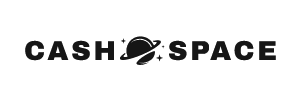 | 500 - 25000₱ | 61 days | 🆓 0% interest to new customers! | Apply for a loan | |
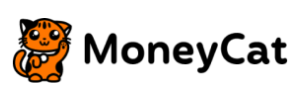 | 500 – 25000 ₱ | up to 180 days | 🆓 First loan for FREE | Apply for a loan | |
| No applications with TIN, PAGIBIG, or Postal ID | |||||
 | 1000 – 50000 ₱ | up to 365 days | 🆓 First loan free of charge | Apply for a loan | |
 | 1000 – 20000 ₱ | 61 days | 🆓 First 7 Days with 0% Interest! | Apply for a loan | |
 | 500 – 25000 ₱ | up to 365 days | 🔥 The best offer today! | Apply for a loan | |
 | 500 – 25000 ₱ | up to 135 days | ⏱️ Disbursed in 5 minutes | Apply for a loan | |
 | 2000 – 25000 ₱ | 62 – 360 days | 🆓 First loan for FREE | Apply for a loan | |
 | 1000 – 50000 ₱ | 🆓 First loan for FREE | Apply for a loan | ||
 | 1000 – 25000 ₱ | 91 – 365 days | ✅️ Most approved | Apply for a loan | |
 | 1000 – 25000 ₱ | up to 1800 days | Apply for a loan | ||
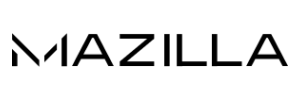 | 500 - 25000 ₱ | 61 – 365 days | Apply for a loan | ||
 | 500 – 25000₱ | 91 - 180 days | Apply for a loan | ||
 | 1000 – 25000 ₱ | 61 – 365 days | Apply for a loan | ||
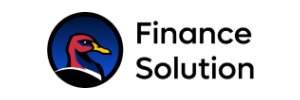 | 1000 – 50000 ₱ | 91 – 365 days | Apply for a loan | ||
 | 1000 – 25000 ₱ | 61 – 180 days | Apply for a loan | ||
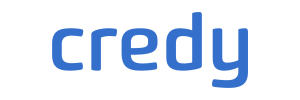 | 1,000 - 25000₱ | 61 - 120 days | 🆓 First loan for FREE | Apply for a loan | |
 | 1000 – 25000 ₱ | 62 – 120 days | Apply for a loan | ||
 | 1000 – 25000 ₱ | 61 – 120 days | 🆓 First loan for FREE | Apply for a loan | |
 | 1000 – 30000 ₱ | up to 180 days | Apply for a loan | ||
 | 1000 – 25000 ₱ | 61 days | Apply for a loan | ||
APR (annual percentage rate) can vary from 0% to 143%. The loan duration is between 62 days and 20 years. Representative example: If you borrow ₱100.000 to return in 13 weeks, you will repay ₱124.725,87 in weekly installments of ₱9.594,29 (APR 143%). This is a service to find and compare loan and credits. The conditions depend on the financial company, product, amount and loan duration.
Eligibility for unemployed loans
Getting a loan when you’re unemployed might feel challenging, but it’s not impossible. The primary factor lenders consider is your ability to repay the loan. Even without a job, you might qualify if you have an alternative source of income. This could be government benefits, rental income, or part-time work. A strong credit history can also help your case significantly. Additionally, some lenders might require a guarantor or collateral to reduce their risk. Carefully review all conditions before applying to ensure you meet the lender’s criteria and choose a loan that suits your situation well.
Types of loans available
For those who are unemployed, several loan options can offer some relief. Even without a stable income, understanding these options can help in managing financial needs. Here are some types of loans available:
- Small Loans: These are suitable for covering minor expenses or emergencies. They often have a quick approval process with flexible repayment terms suited for short-term needs.
- Personal Loans: Unsecured and often available without requiring collateral, personal loans can provide larger amounts for varied expenses. Repayment can span several months to a few years, depending on the amount and lender policies.
- Emergency Loans: Typically offered for urgent or unforeseen expenses, these loans usually prioritize speed over comprehensive credit checks. However, due to the lack of income, interest rates might be higher.
How to apply
Applying for a loan when unemployed can be daunting, but by following these steps, you can streamline the process:
1. Gather Necessary Documents: Begin by collecting essential documents like a valid ID, proof of residence, and unemployment status verification. Some lenders might ask for additional documents, so check their specific requirements.
2. Research Lender Options: Look for lenders that offer loans specifically for unemployed individuals. Use comparison services to find ones that suit your needs and requirements.
3. Check Lender’s Criteria: Before applying, ensure that you meet the lender’s eligibility criteria. This may include minimum age, residency, and credit score considerations.
4. Select the Application Method: Decide whether you’ll apply online or in person. Online applications are generally faster and more convenient, but in-person applications might allow you to ask questions directly.
5. Complete the Application: Fill out the application form thoroughly, double-checking all information. Inaccurate details can delay the approval process.
6. Submit Documentation: Attach all your documents to your application. Ensure they are valid and updated to avoid processing delays.
Remember to carefully review all terms and conditions before signing any agreement. This will help protect your interests and ensure a smoother application experience.
Potential risks
Taking out a loan without stable income can lead to serious challenges. One major issue is the risk of falling into a debt trap. Without regular income, repaying the loan might become difficult, leading to accumulated debt. Moreover, loans often come with high-interest rates, especially for those with unstable financial situations. These rates increase the total cost of the loan, making it even harder to pay back. It’s crucial to consider these factors carefully before deciding on a loan.
Finance management tips
Managing your finances effectively is crucial, especially when handling loans while unemployed. Start by crafting a detailed budget outlining all income sources and essential expenses. It’s important to distinguish between needs and wants, focusing on necessities like food, housing, and utilities. Allocate funds for loan repayments after covering essential expenses. Setting up automatic payments can help ensure you stay on track and avoid late fees. Additionally, try to build a small emergency fund; even a little saved each month can add up over time.
Always prioritize essential expenses and make consistent repayments to avoid extra fees.
Alternatives to loans
For those struggling without a job, there are paths other than borrowing money. Governments sometimes provide financial assistance programs that help cover basic needs. Although this may sound surprising, community support can be a lifesaver; local groups or charities regularly offer aid to those in need. Freelancing, too, opens doors to flexible work, allowing you to earn without the confines of a traditional job. While loans offer quick relief, exploring these options might lead to more sustainable solutions.
Choosing the right lender
Selecting a reliable lender for unemployed loans requires careful thought. One of the first things to consider is the interest rate, as it directly impacts the overall cost of your loan. Comparing rates helps in finding more affordable options. Next, focus on repayment terms. It’s important to look for lenders that offer flexible repayment plans so you can manage payments even in challenging times. Transparency and reputation should guide your choice, helping you to avoid unpleasant surprises down the line.
